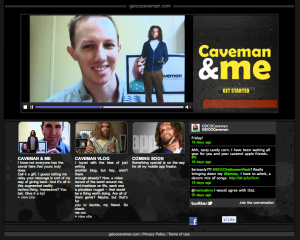
Microsites are small 1 to 6 page sites that are laser targeted to a specific product, service or event that may or may not be offered on you main company site. They are quick and easy to put up and are excellent promotion tools for your brand.
Two great examples of very successful microsites are Geico’s Cavemanscrib.com and Burger King’s SubserviantChicken.com campaigns. Neither of these websites speaks directly about the product but both are interactive and have gone wildly viral. This is great branding for both parent websites.

As a small business owner you can take advantage of these powerful little websites.
For example you may be a major sponsor for a community event like a 5k Fun Run. Sponsoring events like this is a great way to develop brand awareness and generate fantastic PR but you wouldn’t want to devote an enormous amount of space on your main site to feature it. A microsite solves that problem by offering up text, photos and even video all focused on the run and your involvement with it.
PR and branding are only two examples of how these websites can be used. Again the principal advantage is that they are relatively easy to put up and they don’t disrupt your main website. This allows you to feature a product or service, or experiment with new calls to action or target a specific audience all independent of your base website.
Each microsite is really an exercise in direct marketing. Each page of the site should be considered a landing page and have a strong call to action (or two) to get the visitor to behave the way you want them to.
Here are a few things to consider when you’re setting up the design.
- Place your primary offer and call to action above the fold as often times text below the fold is not seen when a visitor “scans” the page.
- Make the site mobile friendly. I’m not sure you can buy a phone today that isn’t connected. Make your site easy to navigate on a mobile device.
- Include a site map that can make navigation for spiders easy.
- Put a face on the page. Pages that are strong calls to action are more effective if there is a human face that the visitor can identify with and develop a sense of trust.
- Use multiple calls to action in different locations on the same page to increase the odds of conversion.
- Sprinkle in testimonials or snippets of news releases regarding the subject to build credibility.
These little sites can rank just as well as your home site if they are constructed properly. They typically have a short shelf life but they can drive significant traffic and open new sales opportunities for you.
The next time you send out a flyer, consider boosting the effect by putting up a microsite and including the URL in your direct mail piece. You’ll be glad you did.